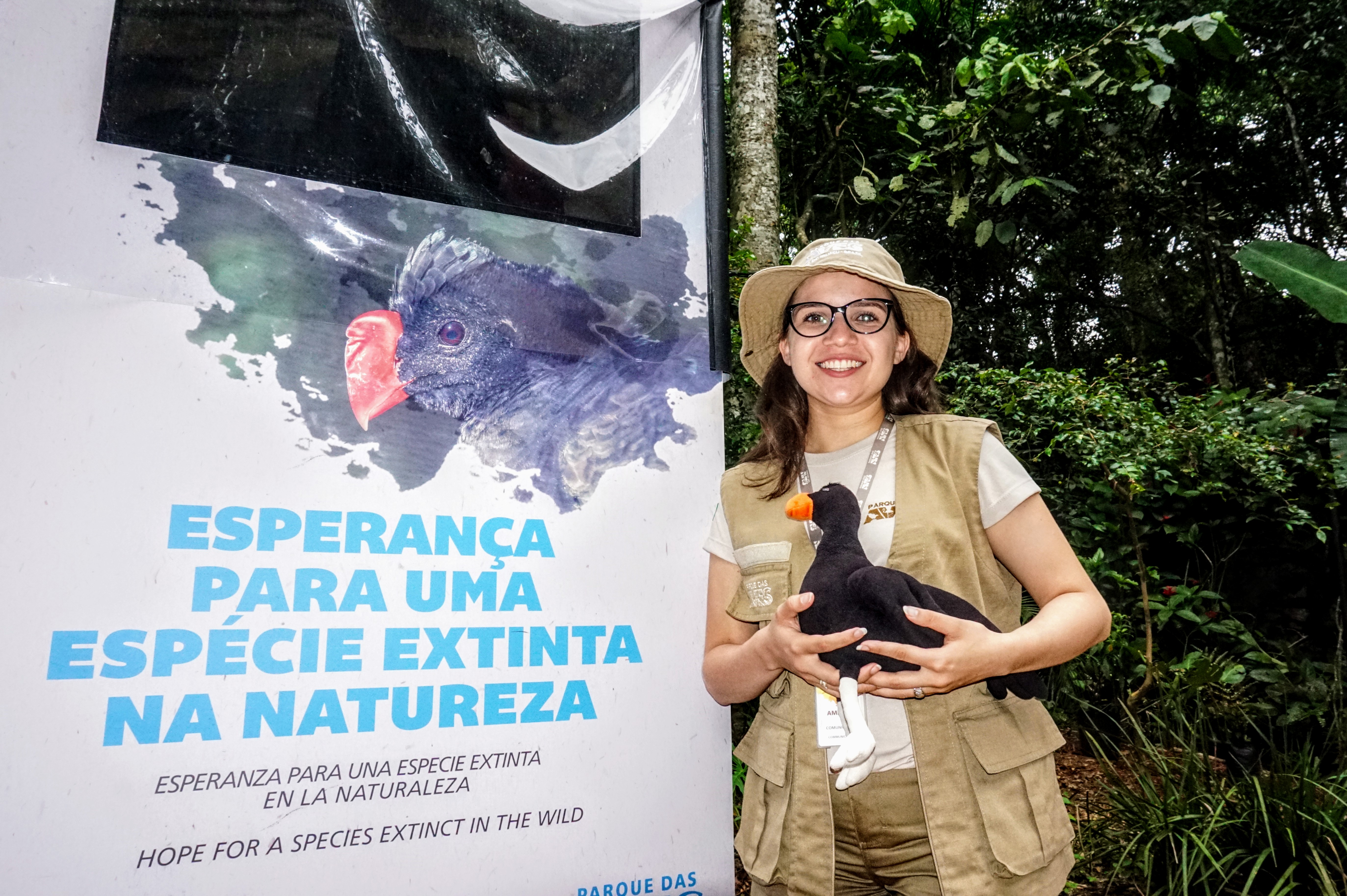The Bird Park will be the first zoo in the world to exhibit the Pauxi mitu (Pauxi mitu), extinct bird of nature since the 1970s. The new space will be called “How we save species” and will be inaugurated today (29) in Foz do Iguaçu, western Paraná.
The place will bring several information about how the Park works to avoid the disappearance of species, among them the mutum-de-alagoas. The visitor has the unique opportunity to know the species very closely, as well as to learn more about the reasons that led to their extinction and what they can do so that other animals do not reach this situation.
“Allowing the proximity of this bird with the visitors facilitates the understanding of the importance of the species to the environment in which we live. It is essential to bring this to our reality, because we understand the impact we have on the environment and what we can do to live in a better world for all, “says Paloma Bosso, technical director of the Bird Park.
“Presenting our conservation activities with environmental education activities for our visitors consolidates our work as a conservation center,” adds Bosso.
 Rare species
Rare species
The Mutum-de-alagoas is one of the eleven extinct animals in Brazil, so even reproduction, conservation and environmental education is fundamental. As a participant in the Mutum-de-Alagoas Causation Program, the Bird Park received, in June 2015, 10 bird couples from the CRAX breeding farm in Minas Gerais. Since then more than 20 pups have been born in the Park, increasing by 10% the world population of the bird. Currently, the species depends on the reproduction under human care for this to happen, since there were only three of these animals when the conservation actions were initiated.
“The withdrawal of birds from nature in the late 1970s by Pedro Nardelli was decisive for the species to be saved, in addition to the work of the CRAX breeding establishment establishing the first ex situ populations,” said Carmel Croukamp, director of the Bird Park .
“Within the new focus of the Park on the conservation of birds of the Atlantic Forest, many actions and partnerships with various institutions are being developed, since 119 species of birds in this biome depend on a lot of serious work not to disappear completely,” she concludes.
One of the reasons the mutuma-de-alagoas is extinct in nature is the intense predatory hunting, but the biggest reason is the loss of habitat. The species was only found in a small strip of Atlantic Forest in the state of Alagoas, but this biome is also at risk of extinction, with only 8.5% of its former territory preserved, according to SOS Mata Atlântica.
“As 72% of the Brazilian population lives in the Atlantic Forest, and the Bird Park receives more than 800,000 visitors a year, we have the possibility to inspire many people to make small changes that can make a direct difference in the lives of many animals and species of plants, “says Carmel.
The Bird Park, a conservation center of the Atlantic Forest and the second most visited tourist attraction in Foz, received in 2017 more than 820 thousand visitors.
Value: Free the visitor only pays for the Park ticket (R $ 45,00 per person or R $ 10,00 for residents of Foz do Iguaçu and surrounding municipalities)
For more information: www.parquedasaves.com.br
Photos: Christian Rizzi
